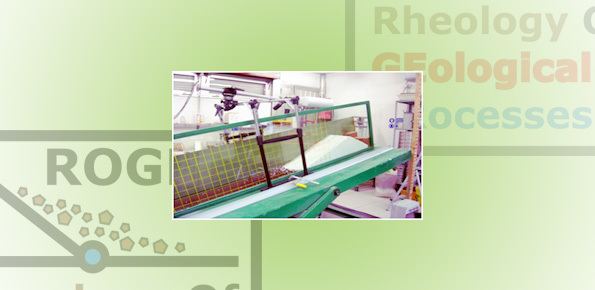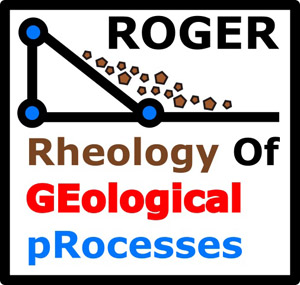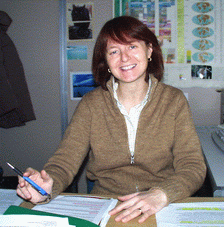Rheology of geological processes
Laboratory studies on debris flow rheology and debris flow hazard assessment (ROGER)

Background
Critical and depositional friction angles are characteristic for the deposition of a granular mass; the wrong angle adoption determines the ineffectiveness of a containment basin. The term is used with different meanings and measured by various procedures. The numerical simulation is a useful tool for the hazard assessment, but the definition of friction needed parameters requires insights on their determination.
Purpose
- Study of the rheological parameters (critical and deposition friction angles, runout) characterizing a granular flow.
- Development and improvement of laboratory measurements of rheological parameters.
- Determination of realistic parameters for numerical simulations of debris flows and for the design of effective protection works.
- Debris flow hazard mapping.
Methods
- Test by means of tilting plane rheometer with variable inclination, on granular materials, artificial and natural, different grain size and density.
- Tests on rock samples in high pressure fragmentation rheometer, (in collaboration with the University of Canterbury, New Zealand).
- Use of numerical models for the study of the propagation of debris flows and rock avalanches.
Results
- Evaluation of the effect of density of materials on grain segregation.
- Evaluation of surface velocity distribution of debris flows by image analysis.
- Development of measurement systems for appreciation of grain-size variations in the granular flow.
- Calibration and certification of the level of commercial and open source software reliability for the simulation of debris flows.
Products
Prodotti nel 2016:
GENEVOIS R., TECCA P.R. (2016). Estimation of the Debris Flow Risk in the Cortina d’Ampezzo area (North-Eastern Italy). In: Proceedings of the 6th International Scientific and Technical Conference “Modern Problems of Water Management, Environmental Protection, Architecture and Construction”, Tbilisi, Georgia, 22-25 September 2016, 212-221.
GENEVOIS R., TECCA P.R., DEGANUTTI A.M. (2016): Interference of tectonic and mining activities on the stability of a rock slope. In: S. Aversa, L. Cascini, L. Picarelli, C. Scavia (Eds), Landslides in Research, Theory and Practice, Proceedings of the 12th International Symposium on Landslides, Napoli, June 12-19, 2016. AGI, vol. 1, 969-974.
TECCA P.R., DEGANUTTI A.M., NIGRO G. (2016): Numerical modelling of a debris flow fan in Eastern Italian Alps. In print su Special Publication on Geology and Geomorphology of Alluvial and Fluvial Fans: From Terrestrial to Planetary Perspectives, Geological Society of London.
TECCA P.R., GENEVOIS R., DEGANUTTI A.M. (2016): Surface velocity distribution and rheological properties estimation of debris flow. In print.
Conclusions
Continuation of the activities described in the “Methods.”
Critical issues stem from the lack of available resources needed to continue the research.




 Internal contact person: pia rosella tecca -
Internal contact person: pia rosella tecca -